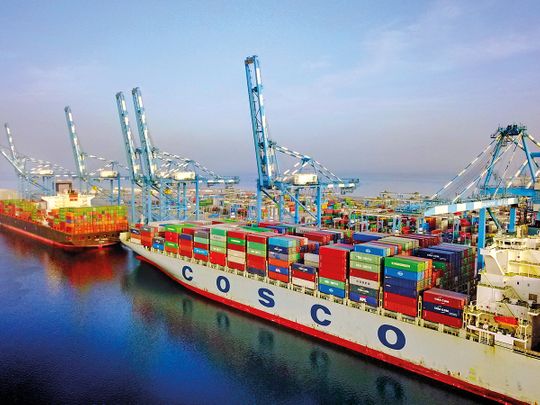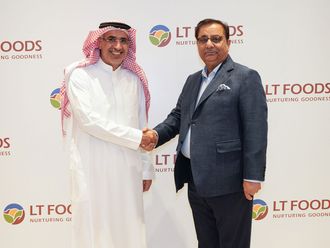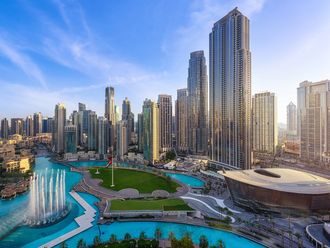
Highlight
Regional companies are realising the benefits of starting operations in Kizad, promoting the benefits of the hub to prospective investors
Food is big business in the UAE. It constitutes the country’s second-largest sector, with the UAE acting as a re-export hub for food products across the entire MENA market.
The estimated value of the UAE’s food product imports is $100 billion (Dh367.25 billion), according to the Ministry of Economy. This is likely to only get bigger, with Alpen Capital predicting that the amount of food being consumed will grow between 2016 and 2021 at a CAGR of 4.4 per cent. That would mean that by 2021, 10.1 million tons of food will be consumed each year in the country. This is something that has been a key driver of growth at Khalifa Industrial Zone Abu Dhabi (Kizad) since it was founded in 2010.
Ideally located midway between Dubai and Abu Dhabi, within easy reach to 400 million consumers in the MENA region, and with potential for duty-free trade in the GCC, the Middle East’s largest industrial zone has a lot to offer food companies looking for a base in one of the world’s most exciting markets.
Realising the benefits
Kizad provides the option of either setting up in its industrial zone or free zone, which offers 100 per cent foreign ownership, 100 per cent repatriation of capital and profit, no corporate and income taxes, and no customs duty on import and re-export.
A number of regional anchor food companies are already realising the benefits of setting up at Kizad, in turn helping to boost the hub benefits for new investors. These include large scale food processing companies such as National Food Products Company, BRF, Al Dahra, Binghatti and National Catering Company, as well as packaging products manufacturers such as Gulf Printing and Packaging.
The success of Kizad is reflected in the success of the food industry in the UAE as a whole, which is being driven by a number of factors, including the growing population and increasing consumer demand.
One of the most exciting opportunities, though, lies in halal products, a rapidly growing sector. For example, by 2020 halal imports in the GCC are projected to reach $53.1 billion, according to a report by Alpen Capital. Already, agricultural specialists Farrelly & Mitchell estimate that the UAE imports more than 310,000 tons of halal products a year, worth almost $20 billion.
Samir Chaturvedi, CEO of Kizad, says, “The UAE is a global hub for halal food products, which is one of the fastest growing product segments in the world.
“In fact, Thomson Reuters, in its State of the Global Islamic Economy Report, says that globally, the value of the halal industry is expected to be $1.9 trillion by 2021.
“Abu Dhabi, located at the centre of the most important consumer base for halal products, offers the ideal platform for serving the markets in the GCC and broader MENA region.”
Connectivity is key
One of the other key attractions of Kizad to food firms is the connectivity it offers, not just in the UAE and the GCC but across the Middle East, Africa and South Asia (MEASA) region and globally.
For example, the zone is already connected with Khalifa Port, the second fastest growing deep-water port in the world and the first semi-automated port in the region. In December, the port opened its second terminal in partnership with China’s Cosco Shipping Ports Ltd, which includes the largest container freight station in the Middle East.
The CSP Abu Dhabi Terminal connects Abu Dhabi with Cosco’s network of ports around the world and makes it a key strategic partner of China’s Belt and Road Initiative (BRI).
Chaturvedi says, “Being connected to customers, suppliers and other key stakeholders is vital to the success of businesses in a competitive industry such as the food sector. They cannot afford to waste time or money.
“Kizad offers excellent access to markets through a world-class transportation infrastructure with multimodal connectivity by road, ports, rail and air, connecting our clients to 4.5 billion consumers.”













